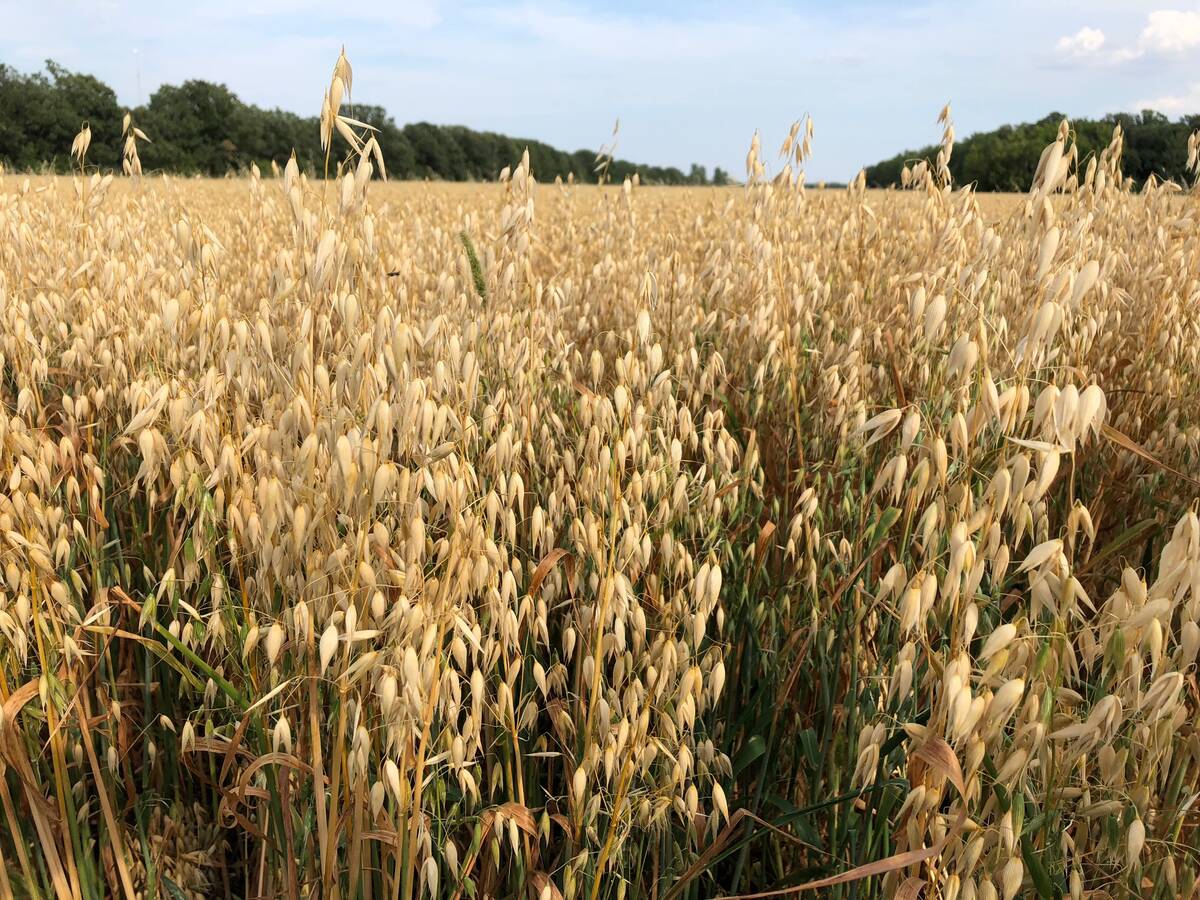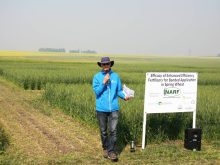Annie Grinde put 5,000 kilometres on her quad last year checking cows and fences and hunting gophers.
“I live on the quad,” said Grinde, who farms at Holden, Alta., with her husband, Elgar.
For the Grinde family, there is no debate between four-legged, hay-powered cow chasers and the four-tired, gas-powered variety.
“We use quads,” Grinde said.
“I never rode a horse when I was young. It’s just easier to catch a quad than it is to catch a horse.”
Read Also

Controversy fails to prevent PGR use in oats
Some Manitoba oat growers are still using chlormequat chloride — the active ingredient in Manipulator —and sometimes to measurable success.
Grinde is part of a growing number of farmers who use four wheels rather than horses to round up cattle.
Les Burwash, manager of horse programs with Alberta Agriculture, said there are no statistics about quad use on farms, but it seems to be a growing trend.
“My gut feeling is yes, we’re seeing more and more guys using quads to move their cattle.”
Burwash said he also thinks the use of quads on farms may be based on geography. Horses may be the more useful tool in the foothills of Alberta,
with its sensitive grassland, trees and steep hills. Quads may be the preferred choice on mixed farms with flat fields and open pastures.
Alberta Beef Producers communications manager Lori Creech agreed. She said horses are the preferred choice on large southern Alberta ranches, while quads may be an easier choice on flat fields.
Creech said her father had another option – kids on foot.
“Dad would send us three kids into the bush,” she said. “That’s why I’m a runner now.”
Burwash said farmers may not intend to replace their horse when they buy a quad, but instead of horses it may be a natural transition to use it to move livestock.
“If you buy a quad in part to have it around, it now becomes part of the farm equipment and increasingly is used more and more to handle livestock,” he said.
For more stories and information see our related articles and the Techs&Specs pages from the Western Producer’s December 3, 2009 edition.
“If people have quads, I’m sure they’re using them.”
Bev Milne of Fairview, Alta., said horses are still their tool of choice when moving cattle on their northern Alberta ranch.
“For us, the horses are pretty much indispensable,” said Milne, who admitted that might be partly because their horses are in better shape than their old quad.
“We don’t really have a very healthy, functioning ATV.”
Milne said when they do select the quad to move cattle, they usually end up wishing they had left the quad at home.
Unlike quads, horses are part of the Milne family life. The couple sells broke horses, team rope at weekend events and help out neighbours who have trouble catching their cattle.
“Our horses are part of our ranch business.”
Grinde said her husband can’t rope from his quad, but it’s close. Using a shepherd crook-type pole, he races beside a calf and snags a back leg with the pole and then drops the rope over the animal’s head.
“It’s quite something to see. My husband is really good at it,” Grinde said.
“I’ve only heard my husband say a couple of times, when animals have been stubborn, that it would be really nice to have a good horse, but he doesn’t say it very often.”
Grinde estimates a horse eats the same as two cows, and the cattle pay for their keep better than a horse would.
“You make do with what you have.”
For more stories from this edition of Techs&Specs this season see: More to driving an ATV; Mighty mini trucks easy on wallet and for our detailed specifications you and find our Techs&Specs pages from December 3, 2009.














